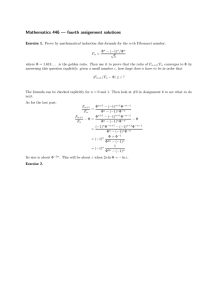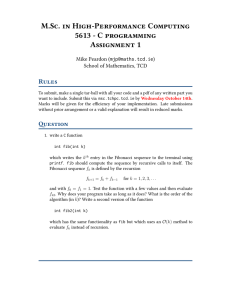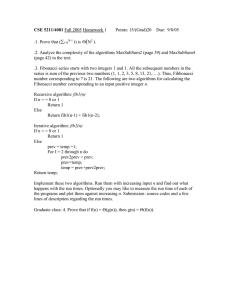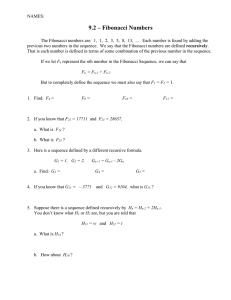Fundamentals of Algorithms Fall 2009 HW 6A 1. Naïve Fibonacci:
advertisement
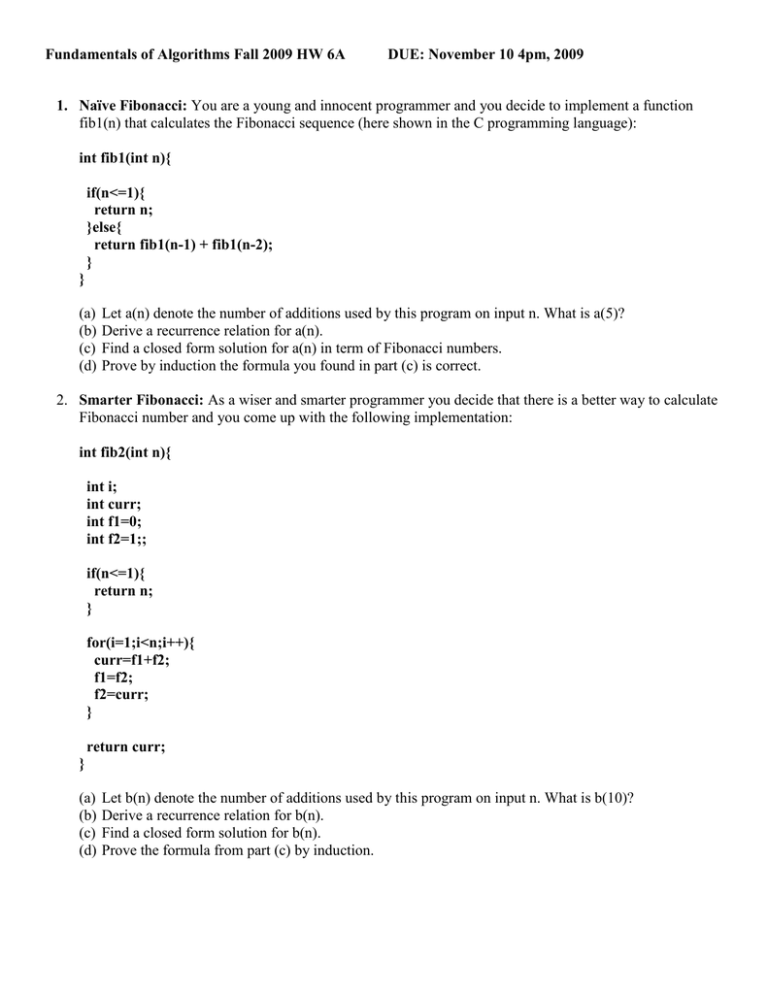
Fundamentals of Algorithms Fall 2009 HW 6A
DUE: November 10 4pm, 2009
1. Naïve Fibonacci: You are a young and innocent programmer and you decide to implement a function
fib1(n) that calculates the Fibonacci sequence (here shown in the C programming language):
int fib1(int n){
if(n<=1){
return n;
}else{
return fib1(n-1) + fib1(n-2);
}
}
(a)
(b)
(c)
(d)
Let a(n) denote the number of additions used by this program on input n. What is a(5)?
Derive a recurrence relation for a(n).
Find a closed form solution for a(n) in term of Fibonacci numbers.
Prove by induction the formula you found in part (c) is correct.
2. Smarter Fibonacci: As a wiser and smarter programmer you decide that there is a better way to calculate
Fibonacci number and you come up with the following implementation:
int fib2(int n){
int i;
int curr;
int f1=0;
int f2=1;;
if(n<=1){
return n;
}
for(i=1;i<n;i++){
curr=f1+f2;
f1=f2;
f2=curr;
}
return curr;
}
(a)
(b)
(c)
(d)
Let b(n) denote the number of additions used by this program on input n. What is b(10)?
Derive a recurrence relation for b(n).
Find a closed form solution for b(n).
Prove the formula from part (c) by induction.
3. Binet’s Formula:
It turns out that the nth Fibonacci number can be expressed in closed form as
(phi^n – (1-phi)^n)/sqrt(5), where phi = (1 + sqrt(5))/2
Prove that this is true by induction. You may find the identity phi^2=phi+1 to be useful.


